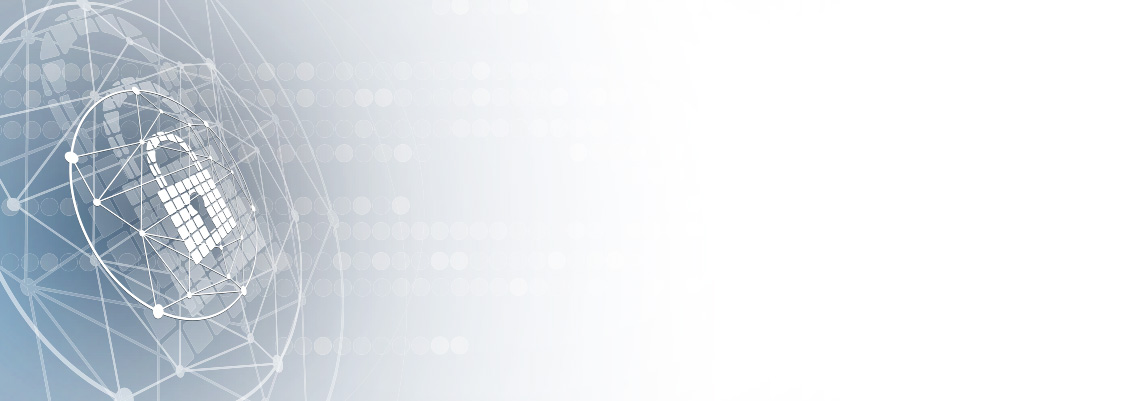
4 Cybersecurity Tips for Distributed Teams
In recent months, remote work has increased drastically. At the beginning of March, it was estimated that just 3.6% of today’s workforce worked from home at least half the time, according to Global Workplace Analytics. Since then, 88% of organizations have encouraged or required employees to work from home, reports Gartner.
Flexible work styles, like distributed workforces and virtual offices were quickly gaining traction in many of today’s organizations, as business leaders began to realize their significant benefits.
However, in response to the current global situation, working remotely is no longer the future of work. It’s a present situation many of us are facing right now, and is expected to continue even after the resolution of the pandemic.
Beyond other manifold challenges of remote work, this new normal comes with an increase in cybersecurity risks. Even under the usual circumstances, getting cybersecurity right can be challenging for many businesses and workers. With a distributed workforce, however, managing the many potential cyber risks can feel downright daunting.
Here are a few tips to keeping your business’s cybersecurity in check while managing a distributed team:
Secure Business Passwords
Passwords are at the core of every security policy, yet ensuring they’re secure and enforced isn’t easy. Consider implementing multi-factor authentication (MFA) that requires additional information beyond a password to gain entry to company systems. MFA will fortify your online accounts by enabling the strongest authentication tools available, such as biometrics or a unique one-time code sent to your phone or mobile device.
A password manager for businesses, like LastPass or Dashlane, can set company-wide minimum password standards to meet your policy requirements. Many times, encouraging your workforce to stay on top of password security can be difficult; people tend to create weak passwords they can easily remember, and then reuse those same passwords across applications. A password manager creates, remembers, and fills in information to ensure high-quality passwords. It takes the responsibility off employees, while also improving password security.
Create a Mobile Device Action Plan
Because distributed teams often use their personal devices for business purposes, security measures must be enacted on mobile devices, like laptops, smartphones, and tablets. Employees use their mobile devices to access confidential company information on the corporate network, public networks, and at home, which increases vulnerabilities to hackers.
Be sure to secure mobile data located on employees’ personal devices with the same rigor as devices found inside the office or those owned by the organization. Companies should create mobile device guidelines that require employees to password protect their devices, encrypt their data, and install security apps to prevent cyber criminals from stealing information while their device is on a personal network.
Connect to a Secure Network
When working from the office, the organization is typically responsible for all data security maintenance, but when employees work from home in a number of geographic locations, this becomes more difficult. In this scenario, the employees have a greater responsibility to ensure their cyber safety, including the networks they connect to. Having a secure connection can ensure that your data isn’t falling into the wrong hands.
Many organizations offer different types of SD-WAN solutions that help keep employees’ connection secure when they work remotely, and is a great way to keep company and personal data safe. If your business doesn’t utilize SD-WANs, there are some other solutions that can work to help keep data secure. For example, Virtual Private Networks (VPNs) are a great way to keep your IP address safe from anyone who might want to use it for malicious purposes.
Update Software Regularly
A “patch” is a small piece of software that improves systems, keeps them up to date, and fixes security vulnerabilities to keep hackers and malware at bay. When vulnerabilities go unpatched, or unresolved, businesses are left susceptible to cyber-attacks or breaches. In fact, unpatched software is among the leading causes of today’s cyber-attacks.
A simple way to prevent this from occurring and ensure that systems are regularly patched is by regularly updating software and other systems. Companies should encourage these proactive tech habits among their workforce, with action items including updating applications and frequently restarting their computers.
It’s often easy to skip software updates because they can take up a few minutes of our time, and may not seem that important. But this is a mistake that keeps the door open for hackers to access your critical information. Software updates are important because they often include critical patches to security holes.
Once you have your security plan in place, ensure all employees are well-versed in cybersecurity practices. It’s been found that 95 percent of security breaches involve human error, so do your due diligence in educating your workforce, no matter how large or small your company. As cyber criminals employ more sophisticated strategies, even the most secure companies need to scrutinize their data security practices.
Categories
- Business Marketing
- Business Resources
- Customer Success Stories
- Customer Success Stories: Communications
- Customer Success Stories: Meeting Rooms
- Customer Success Stories: Virtual Office
- Entrepreneur Tools
- Management
- Meeting Rooms
- Virtual News
- Virtual Office
- Virtual Receptionist Services
- Workplace Culture
Subscribe to Our Blog
Archive

- December 2024
- November 2024
- October 2024
- September 2024
- August 2024
- July 2024
- June 2024
- May 2024
- April 2024
- March 2024
- February 2024
- January 2024
- December 2023
- November 2023
- October 2023
- September 2023
- August 2023
- July 2023
- June 2023
- May 2023
- April 2023
- March 2023
- February 2023
- January 2023
- December 2022
- November 2022
- October 2022
- September 2022
- August 2022
- July 2022
- June 2022
- May 2022
- April 2022
- March 2022
- February 2022
- January 2022
- December 2021
- November 2021
- October 2021
- September 2021
- August 2021
- July 2021
- June 2021
- May 2021
- April 2021
- March 2021
- February 2021
- January 2021
- December 2020
- November 2020
- October 2020
- September 2020
- August 2020
- July 2020
- June 2020
- May 2020
- April 2020
- March 2020
- February 2020
- January 2020
- December 2019
- November 2019
- October 2019
- September 2019
- August 2019
- July 2019
- June 2019
- May 2019
- April 2019
- March 2019
- February 2019
- January 2019
- December 2018
- November 2018
- October 2018
- September 2018
- August 2018
- July 2018
- June 2018
- May 2018
- April 2018
- March 2018
- February 2018
- January 2018
- November 2017
- October 2017
- September 2017
- August 2017
- July 2017
- June 2017
- March 2017
- February 2017
- December 2016
- November 2016
- October 2016
- September 2016
- June 2016
- April 2016
- March 2016
- January 2016
- December 2015
- November 2015
- September 2015
- August 2015
- July 2015
- June 2015
- March 2015
- January 2015
- November 2014
- October 2014
- August 2014
- July 2014
- May 2014
- April 2014
- January 2014
- October 2013
- September 2013
- June 2013
- April 2013
- February 2013
- January 2013
- December 2012
- November 2012
- October 2012
- September 2012
- August 2012
- July 2012
- June 2012
- May 2012
- April 2012
- March 2012
- February 2012
- January 2012
- December 2011
- November 2011
- October 2011
- September 2011
- April 2011
- March 2011
- January 2011
- December 2010
- October 2010
- September 2010
- July 2010
- June 2010
- April 2010
- March 2010
- January 2010
Talk to an expert
Want to know more about our Virtual Offices? Give us a call
Get the Perfect Virtual Address Now
Find a Virtual OfficeServices
Virtual Offices Virtual Office Features What is a Virtual Office? Full Time Spaces Live Receptionist Live Receptionist Features Virtual Phone Number Live Web Chat Meeting Spaces Meeting Space Features Coworking Spaces Event Spaces Marketplace Incorporation Services Search Virtual Office Services Near MeInstant Group
- © 2025 Davinci virtual office







